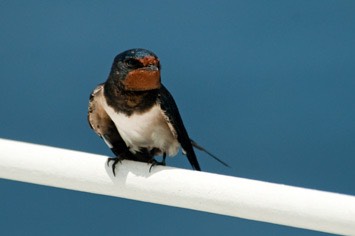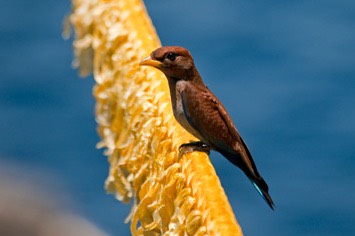Our first trip to Mozambique coincided with the humpback whale (Megaptera novaeangliae) migration north along the coastline. Our study area was off the coast of the Bazaruto Archipelago, and we frequently encountered humpback whales close to the shore. Many of them were very active; lifting their heads out of the water and often breaching repeatedly. This was a spectacular, if often frustratingly distant spectacle, given that these whales grow to around 14 metres in length and weigh up to 40 tons!
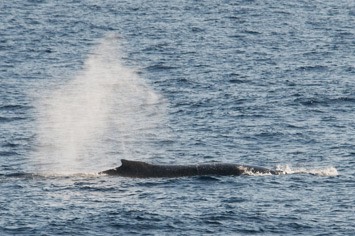
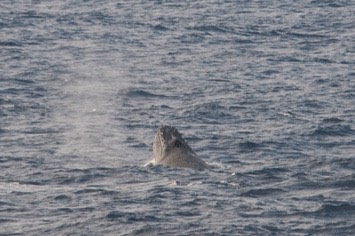
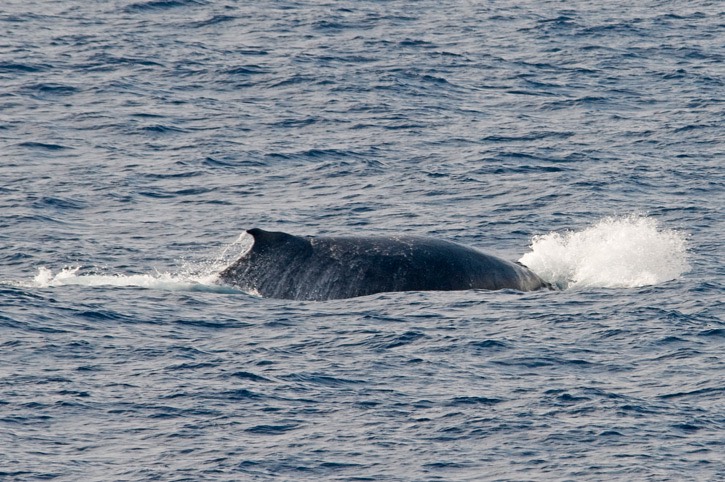
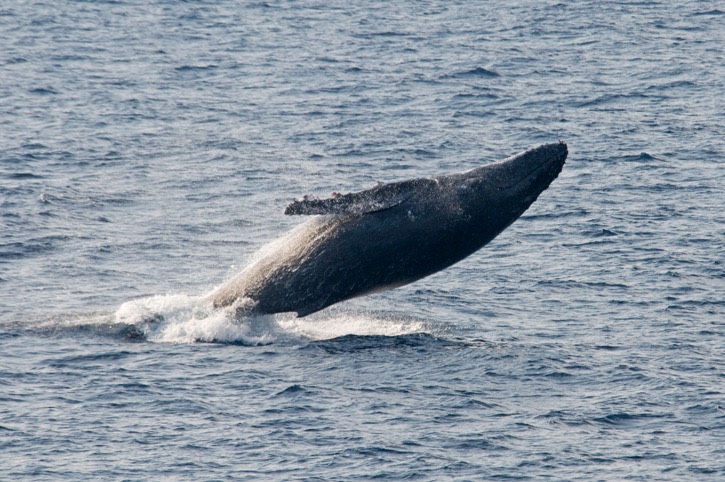
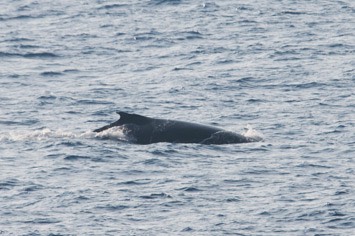
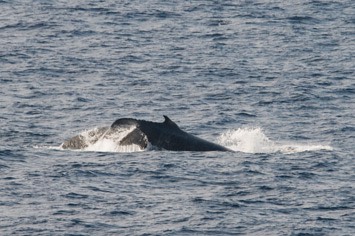
Before making a longer dive, humpback whales usually lift their tail flukes into the air, in order to propel themselves down into the depths. Every whale has a unique pattern on the underside of its fluke, which range from all dark to all white, with a characteristicly marked trailing edge. With the help of good quality photos this makes it possible to tell different individuals apart and photo-identification is widely used in studies of humpback whales. On only one occasion we managed to photograph fluking whales, and the pictures below show the different fluke patterns on the two animals we could identify.
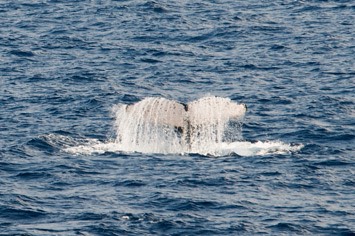
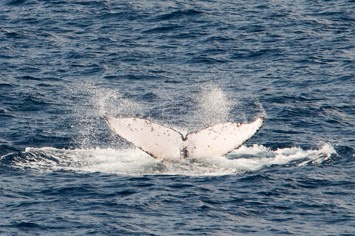
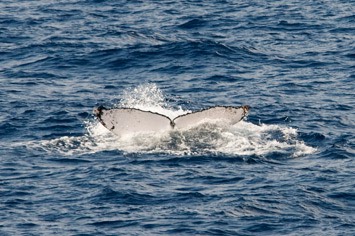
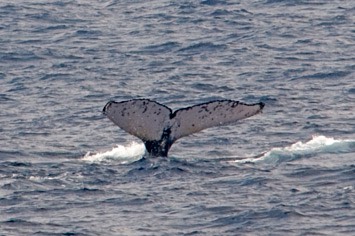
In bad weather the whales seemed to be especially frisky, slapping their tails and often even the whole rear part of their bodies repeatedly onto the sea surface, creating some enormous splashes.
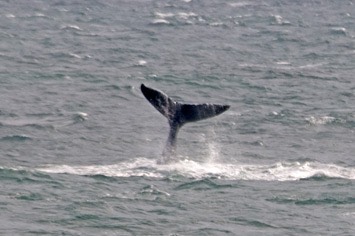
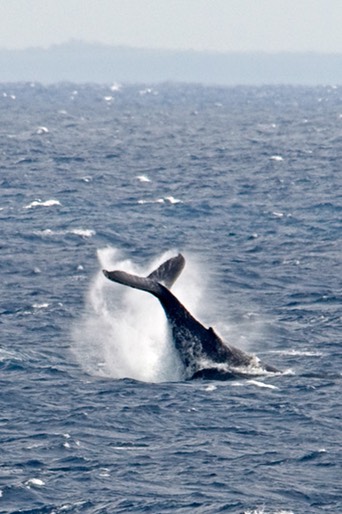
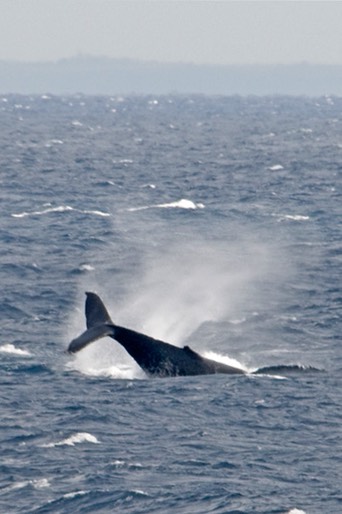
Off the coast of Bazaruto, we also had our first sighting of spinner dolphins (Stenella longirostris). We got very excited when we saw a large group of dolphins up ahead of the vessel, with several individuals performing rapid spins around the long axis of their bodies. In the Indian Ocean only spinner dolphins exhibit such a behaviour, so we were very pleased when the group allowed us to catch up with them and then approached the vessel to bow-ride. A large number of dolphins were just under the bow, but single individuals would rush past alongside, showing the three different shades of grey on their flanks and the very long beaks with characteristic black strips and tips.
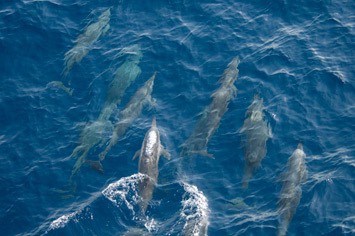
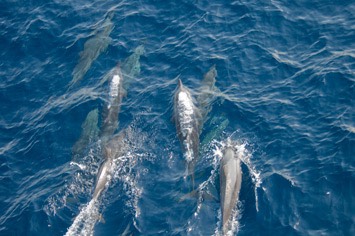
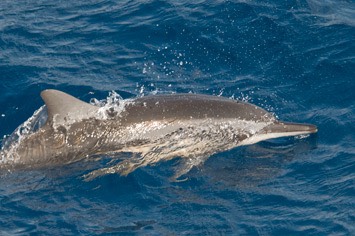
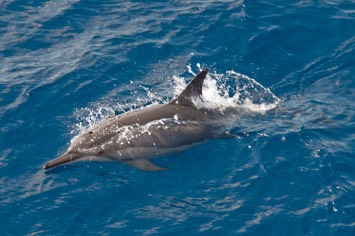
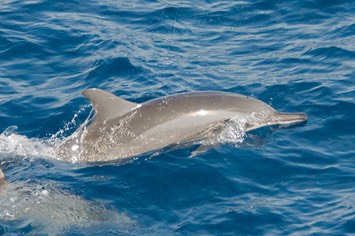
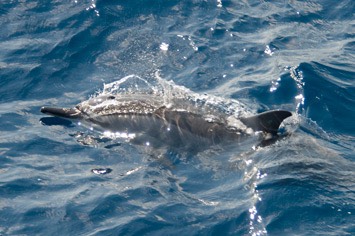
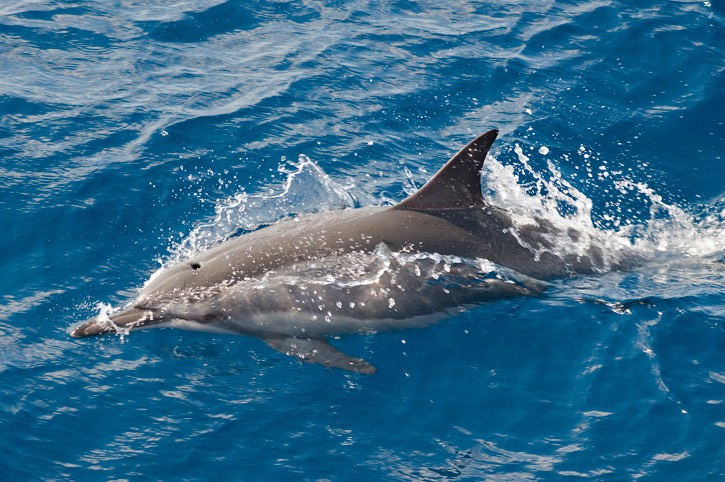
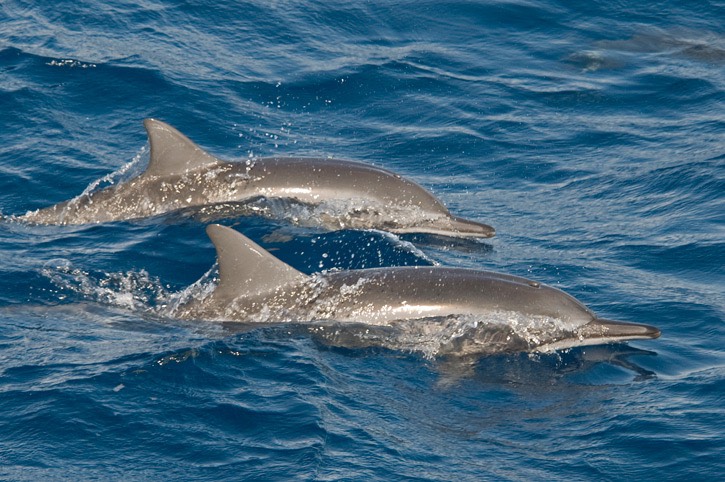
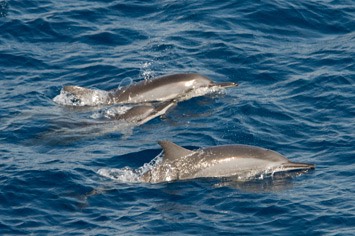
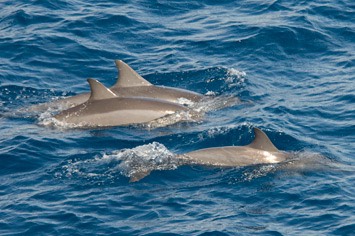
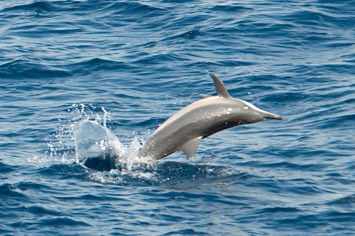
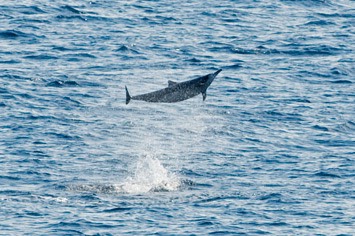
Due to bad weather, we sought shelter at anchor just outside Beira harbour. One afternoon we were positively surprised to see a large group of bottlenose dolphins circling the vessel. There were rather a lot of them and they surfaced either shoulder to shoulder or in very tight bunches. Both the common bottlenose dolphin (Tursiops truncatus) and the Indo-Pacific bottlenose dolphin (Tursiops aduncus) occur in the region, and we struggled to identify the members of this group. In the end we decided that they were probably Indo-Pacific bottlenose dolphins, as their overall shape was somewhat slimmer and paler and they didn't have the typical "bully-boy" appearance of the common bottlenose dolphins.

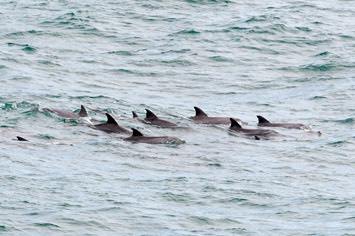
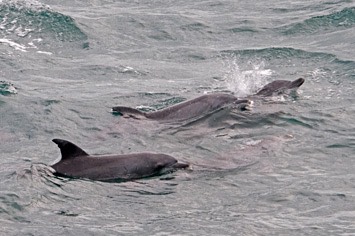
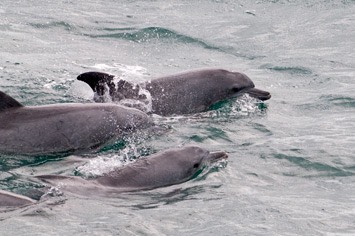
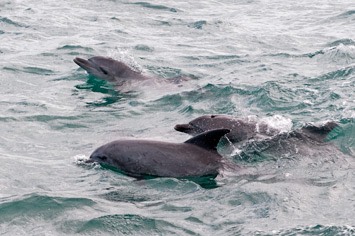
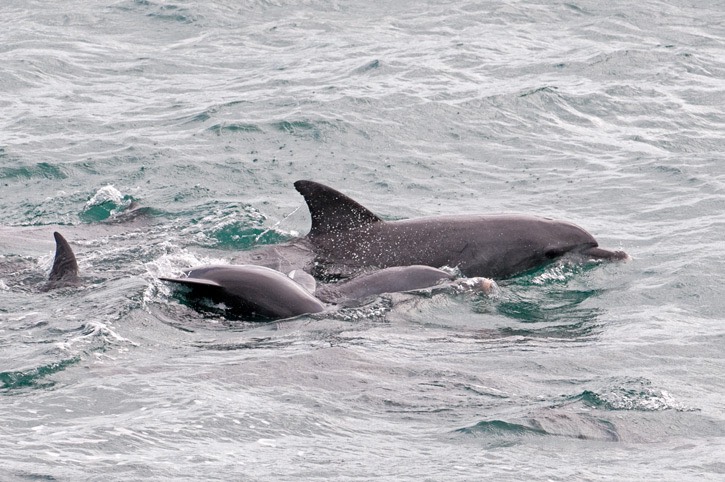
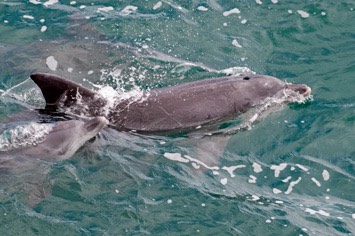
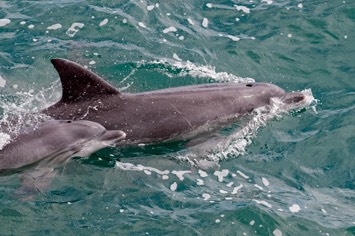
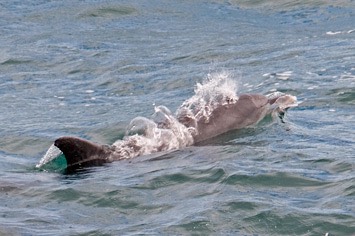
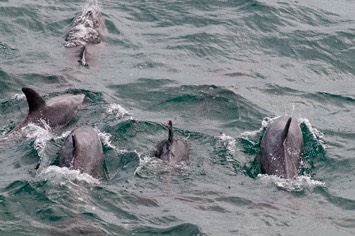
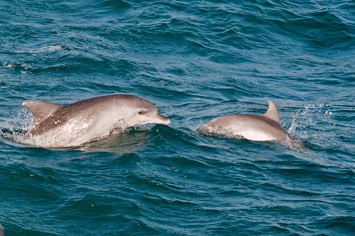
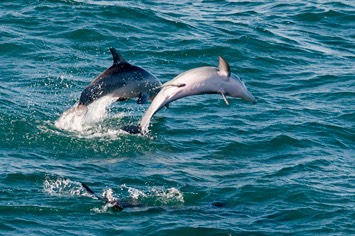
As we watched the dolphins circling the vessel, we realised that these guys had had their fair share of brawls and close shaves with other dolphins, sharks or perhaps even vessels, as many of them were covered in rake marks and were missing parts of their dorsal fins or had large tears and nicks in them. In all our time studying the bottlenose dolphins of Cardigan Bay, Wales, we had never seen so many well-marked animals, and certainly not so many in one group! Two animals were missing huge chunks of their fins, so we called them "Stump" and "Stumpy". They seemed to be good mates and often surfaced close together. Initially we estimated the group to comprise around 20 individuals, but when we later went through our photos and compiled a photo-ID catalogue for this group, there were 30 individuals that were clearly recognisable by their rake marks and nicks in the fins. On top of that there were quite a lot more unmarked animals, bringing the total group size to nearly double our original estimate, reminding us just how difficult group size estimation can be!
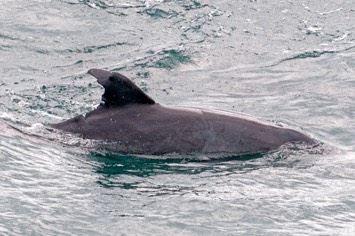
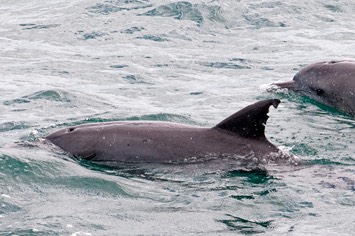
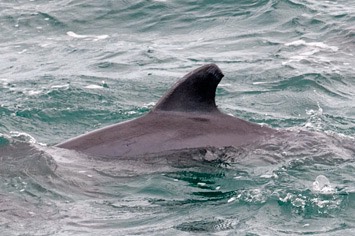
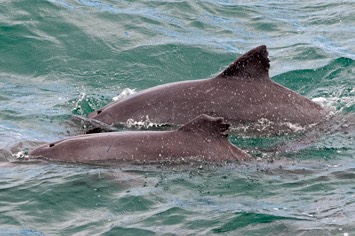
Back out at sea we also encountered a group that was clearly identifiable as common bottlenose dolphins. They accompanied two humpback whales and didn't have much time for us other than surfacing a couple of times close to the vessel before heading off to meet up with their big friends again.
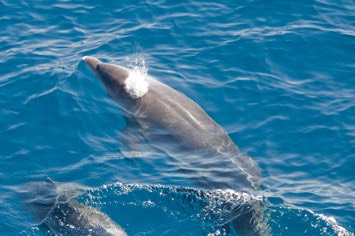
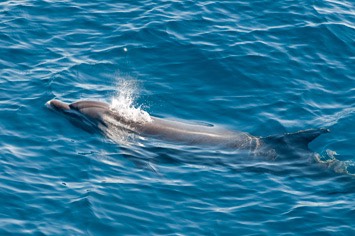
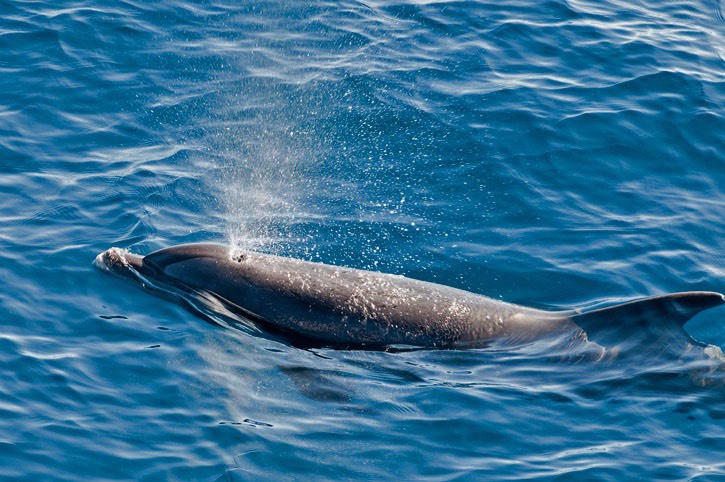
Our second trip to Mozambique took us to much deeper waters near the Tanzanian border. It was also outside the humpback whale migration, and only a few sperm whales (Physter macrocephalus) and a small group of unidentified beaked whales were seen. All other sightings were of dolphins and members of the so called "blackfish" family. Dolphin sightings included striped dolphins (Stenella coeruleoalba), pantropical spotted dolphins (Stenella attenuata) and Risso's dolphins (Grampus griseus). Short-finned pilot whales (Globicephala macrorhynchus) were seen once, but melon-headed (Peponocephala electra) or pygmy killer whales (Feresa attenuata) were seen on several occasions. These two species are very similar and difficult to differentiate at sea. Only once were we able to positively identify pygmy killer whales, when we could clearly see their rounded head shape and pale anchor shaped patch on the chest.
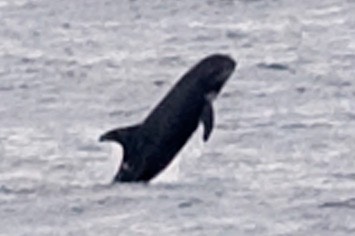
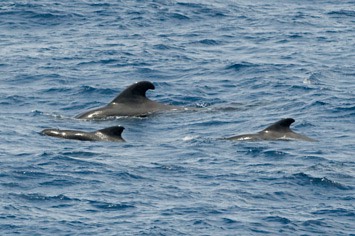
Brown morphs of the red-footed booby (Sula sula) were often flying around. Their chocolate brown plumage looked splendid in the sunshine!
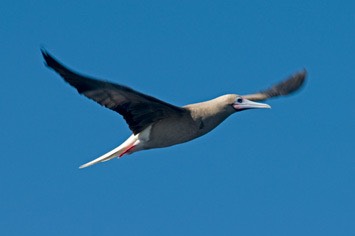
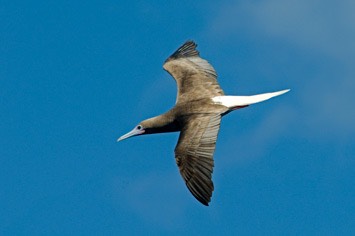
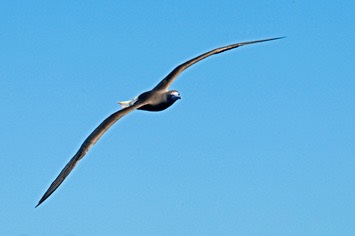
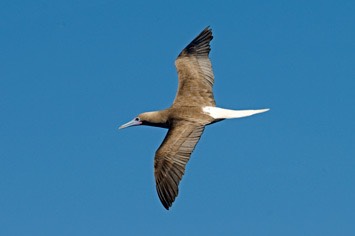
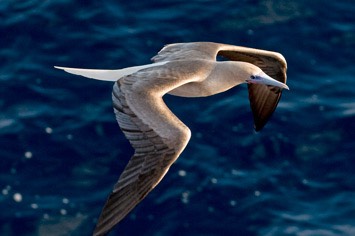
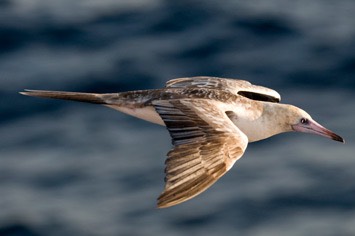
One day, a juvenile bird landed on the ship and decided to take up residence with us. Sitting on the rail of the ship, we could marvel at its spectacularly red feet and its pink and blue beak.
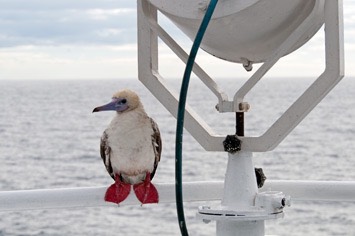
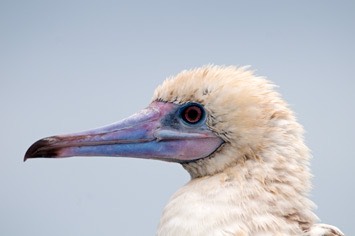
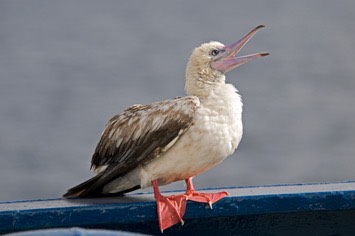
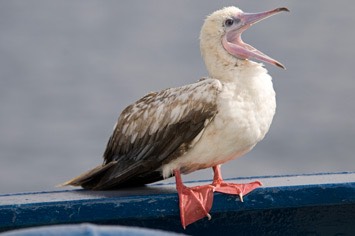
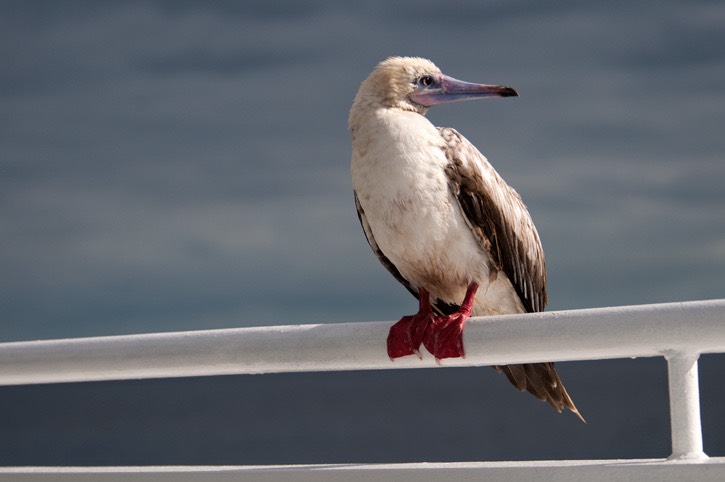
Despite not going anywhere for quite a while, the bird made sure that all its feathers were in top condition by preening itself regularly.
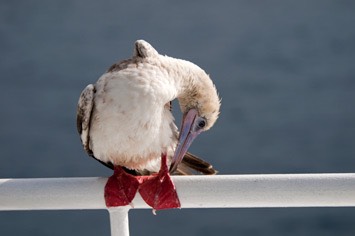
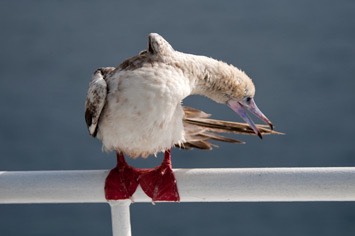
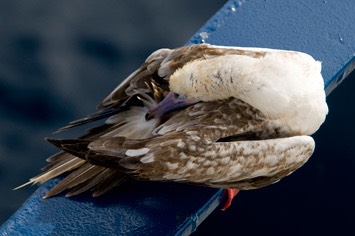
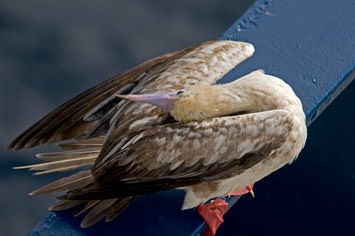
However, the youngster always had this silly air of looking a bit awkward (is that how they got their name?), the way it sat huddled on the rail and was continually struggling not to or be blown off if the wind picked up. It kept us entertained for hours, and every day we went outside first thing in the morning, checking for its familiar shape. The ship's crew wasn't quite so pleased about this visitor, as it left its messy calling card all over the deck!
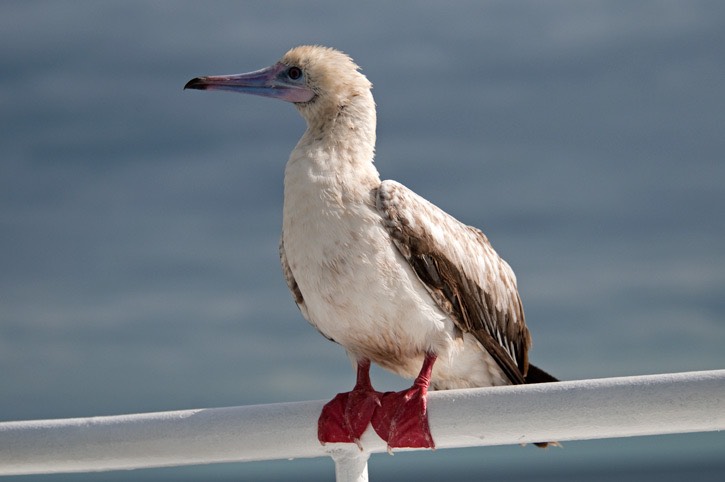
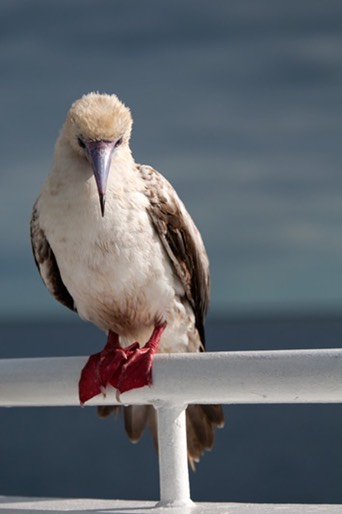
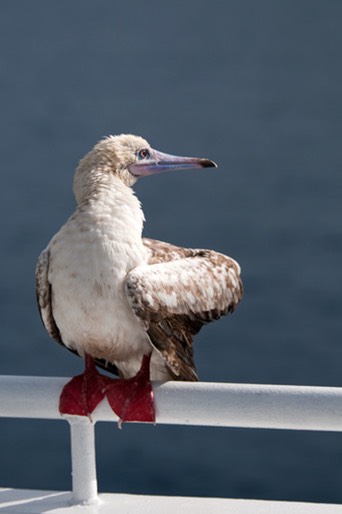
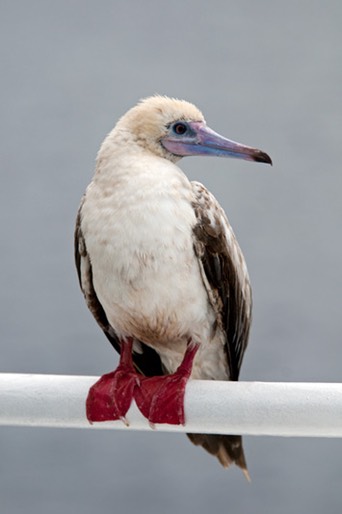
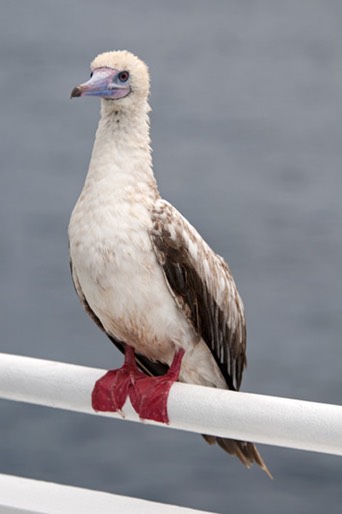
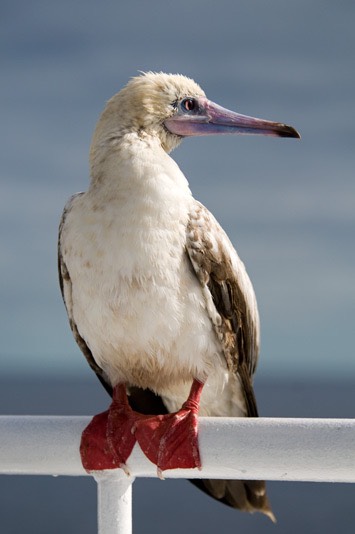
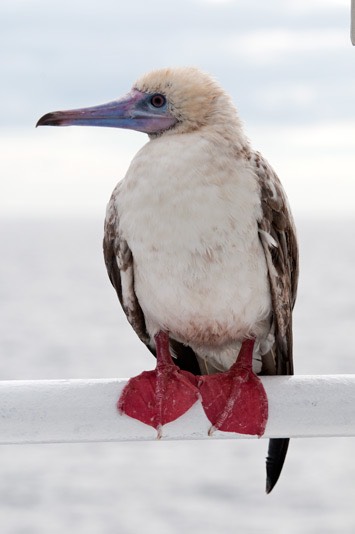
After a while the young booby became so used to the people walking around on deck, that we could even walk right up to it! It seemed a bit puzzled though, when Mick showed it his picture in our bird field guide.
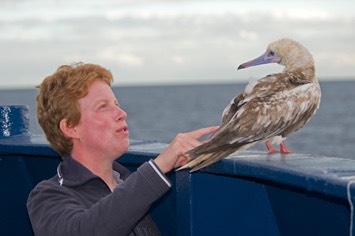
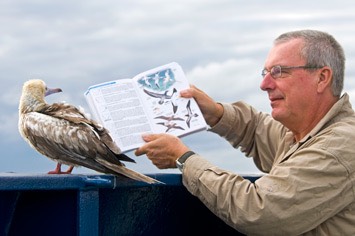
There were a few land birds to entertain us too. A barn swallow (Hirundo rustica) rested on the ship for a short while before continuing its migration to northern Europe, while the broad-billed roller (Eurystomus glaucurus) is a breeding bird in Mozambique.
